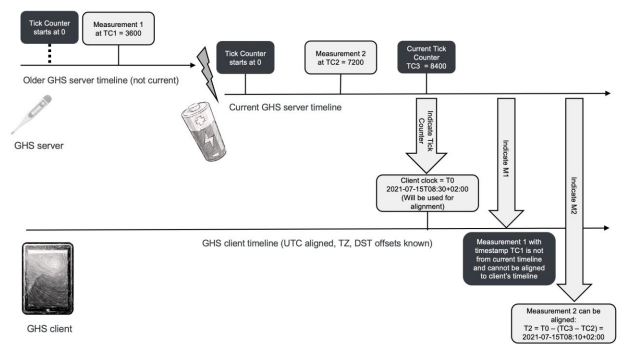Staring at the P-51 Mustang, you ponder its history…. Dangerous missions escorting bombers, dogfights, battles with the Luftwaffe…. Turning your head, you see a Curtis P-40 across the way. As you walk over to take a closer look, you hear an unsettling whistle followed by the roar of a radial engine. Looking up you see a gull winged Corsair hanging in mid-dive. Feeling a thump on your wrist, you read “Air driving across the engine air inlets at high speed produced an eerie whistle. The Corsair was nicknamed “whistling death”. Whether in a dog fight or bombing run, this eerie whistle followed by the roar of the radial engine was the telltale sign that a Corsair was in the air.” Wow, what a cool aviation museum! Planes hanging from the ceiling, sound effects, and information about exhibits popping up on your smart phone or watch.
This is just one example of how beacons, Bluetooth 5, and well-designed apps are redefining user experiences. ABI estimates that by 2021, there will be over 565 million Bluetooth® beacons shipped per year. That’s a lot of beacons!
Bluetooth 5 is redefining developer’s toolkits with four times the range, two times speed, and eight times broadcast messaging capacity! So how is Bluetooth accomplishing this? Let’s take a closer look.
Bluetooth 5 provides three low energy PHYs:
- LE 1M PHY –1M/s bit rate; uncoded (each bit maps to single radio symbol). Same PHY used in Bluetooth 4.0.
- LE Coded PHY (new) – Supports 1M/s symbol rate with error correction coding. Used for Bluetooth 5’s “four times the range”.
- LE 2M PHY (new) –2M/S symbol rate; uncoded. Used for Bluetooth 5’s “2 times the speed”.
So with two new PHYs, we gain 4 times the range and 2 times the speed, but what about the additional messaging capability for beacons?
Recall in Bluetooth 4.0, the advertising payload was a maximum of 31 octets. In Bluetooth 5, we’ve increased the payload to 255 octets by adding additional advertising channels and new advertising PDUs.
Additional Advertising Channels
In Bluetooth® 4.0, all advertising was done on 3 of the 40 – 2.4GHz ISM band channels. With Bluetooth 5 there are now two sets of advertising channels: primary and secondary.
The primary advertising channels are the original 3 of the 40 advertising channels defined in Bluetooth 4. While the secondary advertising channels use the 37 fixed channels previously reserved for data.
Whether using legacy advertising PDUs or the new extended advertising PDUs, these events begin on the primary channel. We’ll focus on exactly how the channels work in a future blog.
For now, let’s look at the new PDUs.
New Extended Advertising PDUs
To support increased messaging, we’ve added extended advertising PDUs. These PDUs are broadcast only events (like electronic beacons):
- ADV_EXT_IND
- Supports unconnectable (broadcast only) and scannable directed events
- Examples:
- Unconnectable: Standard beacon defining proximity of museum guest to overhead Corsair exhibit. Enabling user experience of Corsair “in flight sound” and aircraft history pop up.
- Scannable directed: Museum bathroom beacon broadcasting directly to the museum’s central controller, stating a bathroom needs maintenance. Using a scan request the museum controller may request additional information regarding maintenance needs (empty soap/towel dispensers, etc.).
- AUX_ADV_IND
- Used for first fragment of advertising data sent on the secondary advertising channel (unconnectable and scannable directed).
- AUX_SYNC_IND
- Used for Periodic Advertising where unidirectional data is sent at fixed intervals (we’ll explore this more in a future blog).
- Example: Museum bus stop beacon broadcasting when the next bus will arrive and depart for an auxiliary building.
- AUX_CHAIN_IND
- Sends remaining data from incomplete auxiliary PDU advertising events.
Okay, cool. We have secondary advertising channels and new PDUs, but we developers have written a really cool app. An app that measures proximity; triggers an audio file to users in range of an aircraft; and provides a link with aircraft specs and history. How do we get the extra data sent out? Let’s take a look.
New Packet Format
The link layer packet format for uncoded PHYs is almost identical to packet from Bluetooth® 4.0: preamble, access address, PDU, and CRC. (Figure 1.) The only difference is the size of the preamble. When using LE 1M PHY (Bluetooth 4.0 PHY), the preamble is 1 octet (just like Bluetooth 4.0), and when using LE 2M PHY (new to Bluetooth 5), the preamble is 2 octets. As in Bluetooth 4.0, the PDU field (figure 1) breaks into two elements: advertising header and advertising payload (figure 2).
Just like legacy advertising PDUs, the extended advertising PDU header defines the PDU Type (in the advertising header, figure 3) and Length (size of advertising Payload in octets – in the advertising header, figure 3).

The payload for Common Extended Advertising events, has 4 elements (figure 4):
- Extended Header Length – Value between 0 -63 defining the length of Extended Header
- AdvMode – Defines mode (non-connectable & non-scannable; connectable & non-scannable; or non-connectable & scannable)
- Extended Header – Defines attributes of the extended advertising event
- AdvData – Contains advertising data
So how much actual advertising data do we get? The maximum size of the AdvData depends on the size of the Extended Header and is calculated as follows:

Two new LE PHYs; secondary advertising channels; extended advertising PDUs; and an extended advertising payload… Whether designing a slick user experience for your favorite aviation museum or creating a unique and innovative solution for your customers, Bluetooth 5 provides new tools for developers.
In our next blog, we’ll take a more in depth look at Bluetooth 5’s extended advertising features.
![]()
FEATURED DOWNLOAD
Bluetooth 5: Go Faster, Go Further
Download this comprehensive overview to discover how Bluetooth 5 significantly increases the range, speed, and broadcast messaging capacity of Bluetooth applications, making use cases in smart home automation, enterprise, and industrial markets a reality.























